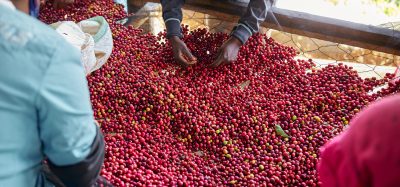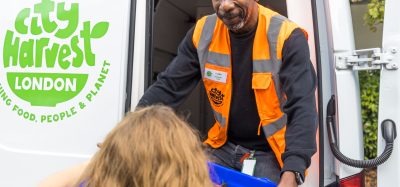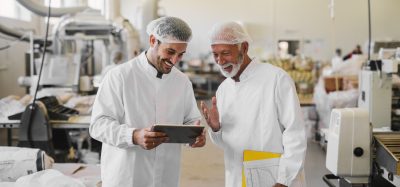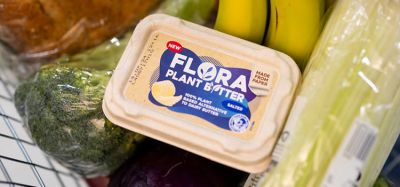Packaging for customers, consumers and the environment
- Like
- Digg
- Del
- Tumblr
- VKontakte
- Buffer
- Love This
- Odnoklassniki
- Meneame
- Blogger
- Amazon
- Yahoo Mail
- Gmail
- AOL
- Newsvine
- HackerNews
- Evernote
- MySpace
- Mail.ru
- Viadeo
- Line
- Comments
- Yummly
- SMS
- Viber
- Telegram
- Subscribe
- Skype
- Facebook Messenger
- Kakao
- LiveJournal
- Yammer
- Edgar
- Fintel
- Mix
- Instapaper
- Copy Link
Posted: 30 June 2010 | Jay Gouliard, Vice President Global Packaging, Unilever | No comments yet
Unilever is one of the leading suppliers of fast-moving consumer goods, with products on sale in over 170 countries. Our portfolio of foods, home and personal care brands is trusted by consumers the world over. On any given day, two billion people use our products. Unilever business and brands have impact at every stage of their lifecycle; in sourcing raw materials, packaging, manufacture, distribution, consumer use and disposal. Towards the end of 2009, we launched a new vision to double the size of our business while reducing its overall environmental impact across the entire value chain.
Unilever is one of the leading suppliers of fast-moving consumer goods, with products on sale in over 170 countries. Our portfolio of foods, home and personal care brands is trusted by consumers the world over. On any given day, two billion people use our products. Unilever business and brands have impact at every stage of their lifecycle; in sourcing raw materials, packaging, manufacture, distribution, consumer use and disposal. Towards the end of 2009, we launched a new vision to double the size of our business while reducing its overall environmental impact across the entire value chain.
Unilever is one of the leading suppliers of fast-moving consumer goods, with products on sale in over 170 countries. Our portfolio of foods, home and personal care brands is trusted by consumers the world over. On any given day, two billion people use our products. Unilever business and brands have impact at every stage of their lifecycle; in sourcing raw materials, packaging, manufacture, distribution, consumer use and disposal. Towards the end of 2009, we launched a new vision to double the size of our business while reducing its overall environmental impact across the entire value chain.
This commitment presents us with a major challenge. The reduction we are talking about is an absolute one. It incorporates all impacts right across the value chain – from the sourcing of raw materials through to consumer use and disposal of their products. In short, we intend to decouple growth from environmental impact. We are very passionate about this, because we have a long-standing commitment to sustainability and have led the Dow Jones Sustainability Index for 11 consecutive years.
Where do we start in addressing such a challenge?
First, we have to put our own house in order. And we are. Over the last 15 years, the company has significantly improved the eco-efficiency of its network of factories. CO2 from energy has gone down by 41 per cent, water by 65 per cent and total waste from our manufacturing operations by 73 per cent per tonne of production. We recognise that we have more to do and have the plans to get there.
Unilever’s biggest impacts do not come from its own operations. Our 264 factories account for only a small proportion of the emissions. Our biggest effects on the world around us come from the sourcing of raw materials at one end of the value chain and consumer use of our products at the other. These are issues which we cannot tackle alone. Together with NGOs, customers and other partner organisations, we have programmes and commitments in place to address them at each stage of the value chain.
Ultimately, however, we will not achieve our environmental goals without persuading consumers to change their behaviour. For many of our products, consumers generate approximately 70 per cent of the environmental impact. Laundry detergents are a case in point. The temperature and cycle at which the wash is done have a huge impact on the energy and water used. The Cleaner Planet Plan, which is being rolled out across Omo, Persil and Surf brands, is a behaviour change programme that educates consumers on how to do their washing in a resource efficient fashion.
Assessing impacts across the value chain
In 2008, we developed a set of metrics for four priority environmental impact areas across our value chain:
» greenhouse gas (GHG) emissions
» water
» waste
» sustainable sourcing.
These metrics are designed to measure the impacts of our products when used by consumers, such as grams of greenhouse gas per single usage occasion. During 2009, approximately 1,500 products were assessed to allow Unilever to understand their water, waste and GHG impacts in 14 of our largest markets. In 2009, Unilever also started to develop a set of metrics covering social impacts. For those brands with social missions, the metrics seek to measure the benefits they bring to society. In 2010, Lifebuoy will be the first brand to pilot the new metrics, helping track the impact of Lifebuoy programmes on handwashing behaviours over a five-year period. The development of these metrics will allow Unilever to track performance across the portfolio, enabling us to show consumers how their small, individual actions can add up to a big difference.
Packaging
Packaging is an important focus for Unilever. CEO Paul Polman is personally involved in the Consumer Goods Forum. As part of the Consumer Goods Forum, Unilever and Tesco are sponsoring a project to develop an industrywide set of sustainable packaging principles and metrics. Once the metrics are finalised, pilot studies involving member companies will start in 2010. Each of our businesses also looks for opportunities to work in partnership with retailers and NGOs to improve local recycling infrastructure.
Packaging is an investment in our brands, and a measure of the respect that we have both for our customers and for consumers. At Unilever, we take a complete lifecycle approach to managing the environmental impacts to ensure the most suitable and sustainable packaging is used – starting with the raw material, and ending with packaging specific end-of-life scenarios.
The role of packaging is to protect products from damage and contamination throughout the entire lifecycle of the product while also conveying safety and product information. Good packaging design also helps consumers to use products efficiently. Pressure from individuals, governments and campaigning organisations has led to an expectation that manufacturers and retailers reduce product packaging and its associated waste. Consumers are also increasingly choosing to purchase products with less packaging. At the same time, to stand out in a competitive retail environment, products need attractive, well-presented packaging that communicates brand identity and product benefits. We need to be able to reconcile these conflicting pressures. Sometimes the best packaging solutions are not the obvious ones. Reduction and lightweighting, for example, do not always yield the most effective solution from a whole lifecycle perspective. Often, products contain embedded energy and water, and packaging serves to conserve these by reducing spoilage and wastage. More intensive packaging can keep a product safe from damage, so can actually reduce its overall impact.
Unilever’s approach to sustainable packaging involves considering the whole product, not just the packaging. We adopt leading-edge design techniques and choose materials to minimise impacts. In addition, we are working with others, through advocacy and partnerships, to strengthen the recycling and recovery infrastructure. This approach is underpinned by our five principles: remove, reduce, reuse, renew and recycle.
Since 2008, we have been assessing the waste footprint of our products against this new metric. This assesses the weight of packaging material that has not been reused, recovered or recycled, and also measures leftover product. We measure this in both absolute and per consumer use terms. This analysis has helped us to see which categories of products generate more waste than others and which could therefore yield the biggest opportunities for reductions. We have also implemented a process to consider sustainable packaging earlier in the design phase of a product. Under this new process, packaging materials are benchmarked against other available options and must show improvements over time.
In packaging design, we select the appropriate packaging materials to meet the functional requirements of the product. We then optimise the design in terms of sustainability. This process is applied at each stage, taking into consideration the needs of the consumer, product presentation and transportation.
As a routine part of the design process, we use simulation techniques to predict the mechanical properties of the component. This then enables us to optimise the design, ensuring the minimum material use necessary to achieve the required functional characteristics. This technique was used for Knorr Vie, enabling a 10 gram coextruded PP bottle to be converted to a hot, fillable eight gram PET bottle.
Recycling rates, practices and facilities differ around the world, as do the policies of municipalities. We aim to design packaging solutions that are suitable for local waste management systems. We have simplified the number and combinations of materials we use to make our packaging easier to process and recycle.
Some recent Unilever packaging innovations that achieved reductions in environmental impact:
» Packaging composition affects its ability to be recycled. Suave Body Wash bottles now use HDPE which is recycled at 26 – 29 per cent in the US instead of polypropylene which is recycled at only nine per cent
» In Kenya, Uganda and Tanzania Unilever sells Omo and Sunlight detergents in 15 – 30 gram sachets. A new ‘stick pack’ reduces plastic packaging by 37 per cent and allows consumers to measure out the right dose
» In Western Europe, they introduced a 100 per cent recyclable cardboard box for our Sun Green Power dishwasher detergent as well as reducing the cardboard packaging by 20 per cent
In 2009, Hazeline shampoo refill pouch in China won the Walmart Gold Award for Sustainable Packaging. The pouch generates only a third of the waste of a normal pump bottle, encourages consumers to reuse their shampoo bottles and offers them cost savings too.
Other examples of Unilever sustainable packaging initiatives:
» Knorr Stock Pot (Mexico), Magnum/Vienetta (Turkey) – Recycled materials. Unilever switched to recycled carton paper for their cartons
» Puré de Papas (Chile), – Lighter laminate. Unilever reduced the weight of pouches by 13 per cent by switching to a thinner laminate (OPP/PE), removing 5000 tonnes of packaging per year
» Peperami (UK) – Lighter laminate. The laminate used was lightweighted by reducing the PE layer from 70 microns to 50 microns, resulting in an 18 per cent decrease in weight of laminate required. The multipack of fives was also lightweighted by removing the overwrap and introducing a new stringed format with perforations. This reduced the weight of packaging material by 37 per cent
» Pomarola (Brazil) – Fewer cans. Replaced tinplate cans weighing 53.1 grams with three layer (PET/ALU/PE) standup pouches weighing only 7.5 grams, saving nearly 4,000 tonnes of packaging a year
» Knorr (Argentina) – Transport efficiencies. Reduced transport journeys by 13 per cent by reducing the dimensions of the transport case, and hence increasing the number of soup packs from 360 to 432 per pallet
» Knorr (India) – Reducing pouches. The soup pouches in India were redesigned to reduce the dimensions from 130 x 160 millimetres to 120 x 155 millimetres, resulting in a reduction in the quantity of laminate required of 11 per cent. At the same time, the display tray was changed from a full height perforated design to a half height pre-cut tray (reduced from 165 millimetres to 90 millimetres), which enabled the material spec to be reduced from 540 grams per square metre to 475 grams per square metre
» Breyers (USA) – lightweighting. The lid on the Breyers ice-cream tub was redesigned, giving a lightweighting benefit (removing 14 per cent of LLDPE). This saved 626 tonnes of plastic per year, and reduced the number of inbound lorry shipments by 20 per cent
» Hellmann’s (USA) – lightweighting. Converted mayonnaise glass jars to PET, thereby reducing the weight of packaging required by >80 per cent
» Breyers (USA) – certification. Use of FSC certified board for pint tub
» Flora (UK) – lightweighting. Use of PP with injected air to reduce the weight by creating internal air bubbles trapped within the walls of the tub
Unilever has been working in Mexico with a group of companies including Coca-Cola and Walmart on a project called Grupo Transforma. Through a travelling exhibition called La Neta del Planeta (The Truth of the Planet), the project aims to raise awareness of the need to protect the environment. Grupo Transforma has also set up waste collection sites at Walmart stores to encourage recycling among consumers and to increase the use of recycled raw materials in manufacturing.
Therefore, Unilever is taking its new vision very seriously. As our vision states: We work to create a better future every day and hopefully all small actions will add up to create a big sustainable difference for the world.
| Table 1 Unilever packaging footprint (total 2.4 million tonnes 2009 (estimate)) |
| Paper 42% |
| Plastic 27% |
| Glass 15% |
| Metal 7% |
| Mixed 5% |
| Other 4% |
PVC
Our goal is to remove all PVC from our packaging by the end of 2012. Achieving this fully depends on new technology becoming available, as there are still some uses where no suitable alternatives exist. But where viable alternatives do exist, we have committed to replacing all PVC by the end of 2010. We are making good progress towards meeting this target. Where there are currently no suitable alternatives, such as the use of PVC as a seal in food product lids to prevent contamination, we are working with suppliers to identify and implement novel technology solutions.
Paper and board
Unilever is a significant buyer of wood fibre based material. This is purchased from a large number of suppliers and is mainly used for paper and board packaging. During 2009, we worked with the Rainforest Alliance to review the sustainable sourcing practices of our key suppliers and to understand our sourcing challenges and opportunities. We also engaged with key stakeholders and organisations promoting sustainable forest management. This work is informing the development of a sustainable paper and board sourcing policy. Our ultimate aim is to source all our paper and board packaging material either from recycled sources or from sustainably managed forests.
Litter in the developing world
We sell many millions of products in single-use sachets in developing and emerging markets. This makes our brands affordable to people on low incomes. However, the communities in which they live often lack disposal facilities, meaning that these sachets create litter and environmental degradation. We have set up a taskforce to find ways that not only help dispose of these sachets more sustainably, but also recover some value from the raw materials. During 2009, we conducted a study in Asia to test new technology options. This identified pyrolysis as a promising opportunity. Pyrolysis turns sachet waste into fuel, recovering approximately 60 per cent of the embedded energy in the sachet. We will pilot this and similar energy recovery technologies in four countries in 2010 to assess their technical and commercial feasibility. Conclusion Unilever has a well developed approach to sustainability in packaging, which has led to continuous improvements over many years. Through the use of predictive techniques to support design optimisation, and through the careful choice of technologies and materials which support our corporate aim of waste minimisation, we ensure we are focusing on the key areas that will have the biggest impact. Using recycled materials where appropriate, ensuring our packs are compatible with municipal recycling and recovery systems, and continually challenging our choices of pack formats means that we are confident that we are creating packaging which is great for our customers, our consumers, and for the environment.
About the Author
Jay Gouliard
Jay Gouliard is the Vice President of Global Packaging for Unilever, responsible for packaging research, development and design across all Unilever food, home care and personal care categories across the world. Before joining Unilever, Jay was the Vice President, Packaging Development in the ITQ organisation at General Mills. He has also filled several roles at Caterpillar Inc, Anheuser-Busch, McDonnell Douglas Corporation and The Coca Cola Company. Jay holds a Bachelors Degree in Mechanical Engineering from Bradley University and a Masters Degree in Engineering & Technology Management from the University Missouri-Rolla.







